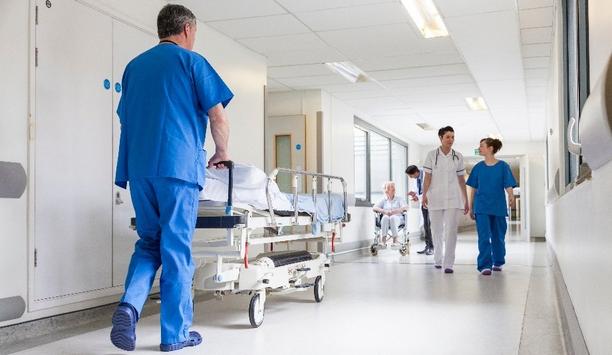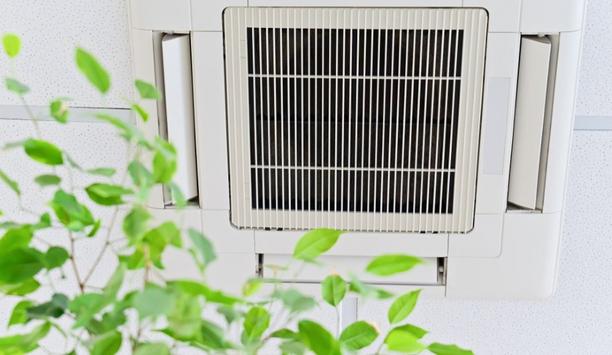COVID-19 - Expert Commentary
Advanced heating, ventilation, air-conditioning, and refrigeration (HVACR) systems have always been essential to healthcare. However, the need for clean, fresh air at the right temperature and humidity within clinical settings has never been made clearer during the COVID-19 pandemic. It illustrated the importance of effective HVACR systems in healthcare due to their ability to improve air quality, patient outcomes, and infection control measures. The need for change Many current...
Patented new filtration technology proved it can upgrade AC units and Air Curtains to become highly effective Air Purifiers. Background and problem AC Split Units and Air Curtains employ coarse dust filters that are normally installed within the housing at the air return vent to allow for frequent filter cleaning. While this vital activity is generally performed on a regular basis in professional settings, it may be overlooked in home settings, leading to the clogging of these filters. This de...
Poor indoor air quality (IAQ) has been a longstanding problem within educational institutions, where it has been known to affect productivity and performance, as well as mental and physical health. And it’s not just the pupils at risk, with studies finding that this deleterious phenomenon can also compromise teaching performance and delivery, which inevitably affects the quality of the information received. CO2 concentrations This has recently been evidenced in a study conducted by the U...
Achieving carbon neutrality has, once more, become a business priority. Whilst COVID-19 distracted attention away from the drive towards Net Zero, green issues are once more back on the agenda and rising to the top of it. Building specifications The built environment accounts for around 28-40% of global emissions, so there is a collective ambition to start specifying buildings with as low a carbon footprint as possible. This is particularly true of commercial office spaces where operational...
As COVID-19 becomes endemic and hybrid working becomes the norm, a great deal of time and energy is going into managing a safe return to the office and a move to new styles of working. As hard FM systems are adjusted to suit new workplace expectations and futureproof sites, Johnpaul Pearson, Business Support Director at Anabas, talks about understanding workplaces and using technology to better design and plan a workplace of the future. Even before the COVID-19 pandemic struck, we were witnessi...
Ventilation systems have never been more important as we battle against an ever-evolving pandemic, and crucially, they must be installed correctly to deliver good indoor air quality for years to come. David Millward, Group Product Manager at Elta Group, explains the practical considerations needed for contractors in charge of installing them. Good indoor air quality (IAQ) With a pandemic that has been raging for going on two years, there has never been a time where good indoor air quality (IAQ...
Indoor air quality (IAQ) has never been closer to the forefront of the public mind. After all, the COVID-19 pandemic is still ongoing. The government’s scientific advisors have warned that, during the coming winter, daily hospitalizations could plausibly reach heights of 7,000 per day. And, of course, we are all thoroughly aware at this point that COVID is an airborne virus and, as such, spreads very effectively indoors – a fact which many people will have reflected on as they...
Housing market dynamics, pressures on global supply chains, and the rising costs of materials and labor are a few of the trends that are impacting the HVAC industry. While COVID-19 restrictions may have been largely lifted throughout the U.S., many of these lingering trends can be traced back directly, or indirectly, to the pandemic. Jobber’s Home Service Economic Report: Record Growth Fuels Labor Shortage explores these trends and their true impact on home service businesses’ abili...
Even though the COVID-19 pandemic is seemingly drawing to a close, living, working and learning at home is set to continue. Under this new normal, home electricity use is expected to double by 2050. Simultaneously, as climate change devastates communities around the world, we are faced with a moral and economic obligation to cut CO2 emissions from houses. Our goal is to build Net Zero houses and we can't get there fast enough. Fossil fuels use in heating systems Many countries continue to rely...
Seasonal transitions are the perfect time to take inventory and inspect a building’s various systems. We’ve been reminded for years that when we set our clocks back, we should also replace the batteries in our smoke detectors. The same thought process can be applied in support of seasonal preventative maintenance for a building’s HVAC system. Now that the cooling season has passed for a large part of the country, it is time to ensure that HVAC systems have been shut down prope...
I am writing this the day after the Autumn Spending Review, which among many measures, included a huge focus on how the Government wants to ‘level up the country’, creating a new post-pandemic economy, with higher wages and higher skills. Part of this is the £500 million ‘Multiply’ scheme, which aims to increase numeracy and basic mathematics for adults in the United Kingdom via in person tutoring, digital training and flexible courses. Lack of basic skills to acce...
Indoor air quality (IAQ) has become an area of emphasis among those in the HVAC industry and on a national level. Homes, offices, schools, and everything in between are being reevaluated with the ambition of having the best IAQ possible. Maintaining a high level of air quality is an important factor in encouraging a cleaner indoor breathing environment, which can lead to the better overall health and well-being of our families and communities. Clean air is especially important now with more wav...
In today’s world, we spend almost 90 per cent of our time indoors, in our workplaces, leisure areas and our homes. It is no secret that the built environment has been relatively slow in its embrace of information technology and automation. According to KPMG’s ‘Building a Technology Advantage’ report, fewer than 20 percent of construction and engineering executives, and major-project owners said they are re-thinking their business models, so as to incorporate new technolo...
A quick glance at official COVID-19 mitigation guidance reveals that it promotes increased ventilation air change rates, as the most effective way to keep people safe. Sounds easy, doesn’t it? Just open a window or turn up your ventilation system, if you have one. The fact is, however, that the vast majority of domestic properties in Britain does not have a mechanical ventilation system and rely on natural means for background ventilation, including windows, trickle vents or air bricks. In...
The ongoing shortage of HVAC equipment and tools has created a significant challenge for contractors around the country. At the same time, companies are also up against intense environmental conditions, like the extreme winter weather that impacted much of Texas in early 2021. The right strategies can help HVAC businesses navigate this shortage and make the most of the equipment they can order. Due to the lingering effects of the COVID-19 pandemic, raw material and component shortages have disr...
A landmark UN scientific study has once again highlighted the short window available to prevent irreversible climate change. Businesses are coming under pressure to dramatically accelerate their net-zero carbon initiatives. This comes at a time where market dynamism is returning across a range of key sectors following a downturn triggered by the pandemic. Businesses are also being pressured by stakeholders to recover revenues lost during the pandemic and to start rebuilding commercial activity...
Most people spend about 90 percent of their time indoors. For home owners, indoor environmental quality (IEQ) is the most meaningful differentiator between ‘high-performance’ and ‘code-built’ homes. Indoor environmental quality IEQ describes how well the indoor environment promotes occupant comfort and health. The components of IEQ include thermal comfort, indoor air quality (IAQ), sound and lighting. Requirements for optimal IEQ vary per occupant and household, d...
In HVAC and smart buildings, short-termism is an easy trap to fall into. We live in a world driven by returns, profit, KPIs and results; where short-term goals often trump long term ambitions as individuals at all levels are judged on their immediate targets. It is a facet of human nature that can cause us to be blind to the bigger picture. Yet for companies to operate not only more sustainably, but equally more effectively in the long run, sometimes the big picture needs to take preceden...
Forget the fact that heat pump installations in the average home could cost several thousand pounds more than a conventional gas boiler and that fully insulating those homes will add even greater cost to the homeowner. It’s not really the cost issue that could be the only potential bump in the road on the way to the target set by the UK Government, because a more pressing problem to solve will be the shortage of trained ‘green’ heating engineers that will be the key to delive...
Post-COVID workplaces will inevitably look different. Changes to working patterns will drive more agile and sociable workplace design. But regulations must keep up with developments. In late January, the UK Government proposed the ‘future of buildings standards’. These proposed updates come at a time when many landlords and site managers will be contemplating changes in response to altered workplace use and demand. As workplaces begin to reopen, organizations have an opportunity to i...
Now, more than ever, Indoor Air Quality (IAQ) is a major focus concerning the health and safety of students and faculty within the nation’s schools. As they prepare their facilities for a return to in-person learning, school officials are being forced to get an education in the most effective ventilation solutions to help prevent the spread of COVID-19 and other infections. Even without factoring in airborne threats like COVID-19, poor IAQ can negatively affect the health and learning of...
When we think of remote working our thoughts often jump to office workers taking laptops to the kitchen table or of Zoom calls interrupted by needy pets. Remote working, however, isn’t just confined to office jobs. Within the HVAC industry, engineers have been working remotely for large parts of the pandemic thanks to advancements in connected technology and automation of HVAC systems. So, just how has technology enabled remote work in the HVAC industry, and is the rise of the ‘work...
With ongoing efforts from governments across the globe to reduce carbon emissions and with an ever greater focus on sustainability, it is vital that the HVAC sector does its part in becoming more environmentally conscious. And, while there have been steps to become more sustainable, there is a huge amount that still needs to be done to make sure that many of the targets that have been set are attainable. In buildings, both large and small, industrial heating accounts for roughly two thirds of i...
As we continue to grapple with COVID two very clear future objectives have emerged: The need for safer and healthier indoor environments to protect against SARS-CoV-2 and other infectious microbial. Acceleration of UK’s net zero by 2050 plan - 78% reduction by 2035 compared to 1990 levels. Last week a group of world-renowned scientists published a paper entitled ‘A paradigm shift to combat indoor respiratory infection’ affirming the need for improved building ventilation...
The education field was faced with multiple challenges this past year. Not only did the COVID-19 pandemic bring the necessity of online learning, but it has also brought up necessary changes to physical schools and universities, when reopening time arrives. The health and safety of students, staff, and faculty has become a priority for directors of school operations, who have been working to properly adapt school facilities to this new reality we are facing. Ensuring health and safety of studen...
Do HVAC systems help with the spread of COVID-19? No one is entirely sure, but it seems very likely. Especially in the case of enclosed indoor spaces. As soon as the COVID-19 pandemic began, fingers pointed to air-conditioning systems as culprits, and scientists now believe a super-spreader event traced back to a restaurant in Guangzhou, in China, which could have started with an asymptomatic person who just happened to cough close to an HVAC fan. Scientists also believe something similar happe...
Over the last year, we’ve become all too familiar with the risk posed by a deadly airborne virus, but, as we move out of lockdown, there are other airborne hazards we urgently need to fight. However, while advice and guidance are abundant in the use of heating, ventilation, and air conditioning systems in combating the spread of COVID-19, there has been very little said of the risk of using HVAC systems after a prolonged period of inactivity. As those familiar with HVAC systems know, air...
In the coming decades, the government plans to phase out gas and oil boilers and replace them with renewable heating systems. To make this possible, to give us a shot of achieving net-zero carbon emissions by 2050, more people need to train as renewable heating installers. But when you were a teenager, if old people like Boris Johnson or George Eustice had told you that you ‘should’ choose a certain career, would you have listened? No, me neither. Yes, there will be plenty of enviro...
Evolution is key. The lessons learned by navigating the COVID-19 global pandemic over the last 18 months have proven that most companies and industries must be in a constant state of evolution, or risk being left behind in favor of a quicker, more nimble innovation. As the world made strides to adopt “the new normal” across personal and professional lives, such evolution increased tenfold, from stay-at-home orders to social distancing, masks, vaccinations, and now, a slow and steady...
As shared spaces reopen, organizations are making some important decisions about their corporate real estate. Unlike other premises, such as shops and schools, offices can manage their returns slowly and carefully. Staff that can work from home may not return to the office full-time for months, or at all. This places office managers in a unique position. While they are able to learn from the actions and advice of other organizations, they must also recognise that a poorly managed re-opening wi...
Leveraging Radiant And Hydronics To Help Achieve Decarbonization Goals
DownloadSealed Connectors In Harsh Environments
DownloadPowering And Cooling Next Generation Data Centers
DownloadDebunking Myths To Promote A Bright Future For Heat Pumps
DownloadOptimizing Comfort: The Ultimate HVAC Component Guide
Download

































